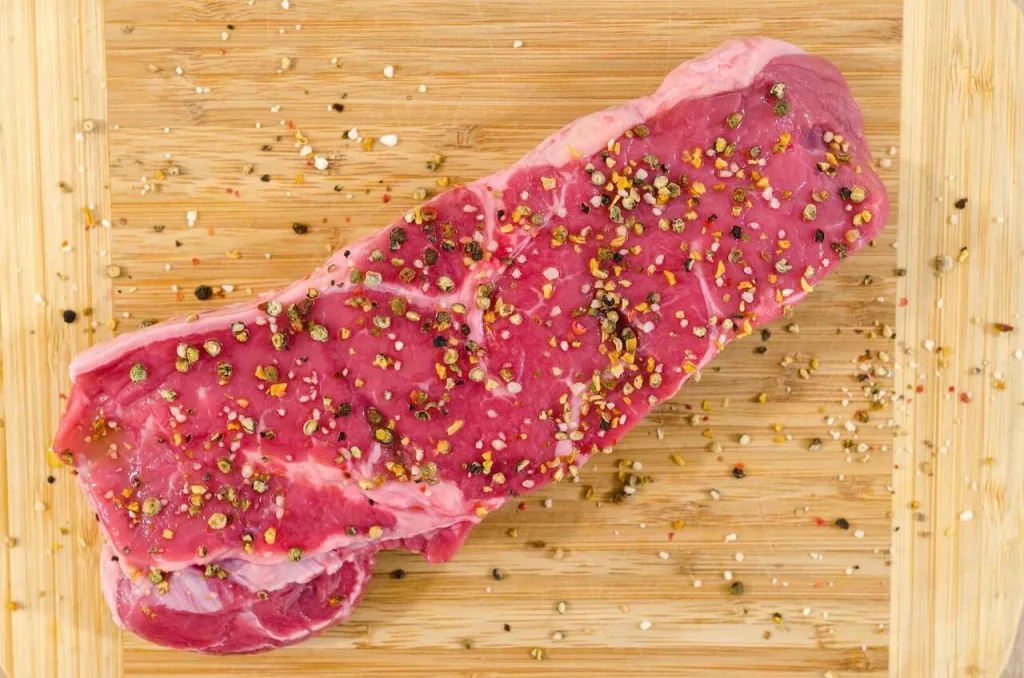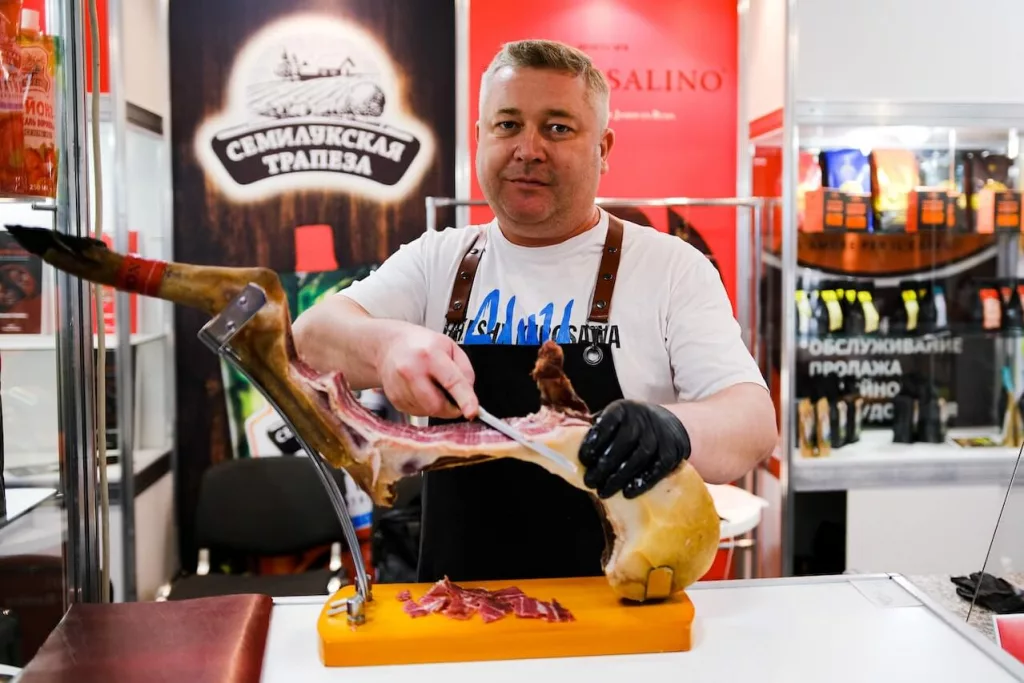So you’re considering adopting a carnivore diet. One of the first considerations may be, “Is the carnivore diet expensive?” On average, the carnivore diet is more expensive than other meal plans. This is due to its heavy reliance on meat products. But just how much more expensive?
The daily costs of the carnivore diet can vary significantly. Your preference of meat, where you shop, and meal creativity, will all affect the total expense.
In this article, we’ll discuss how much you can expect to spend eating carnivore-style. We’ll also offer tips and tricks to follow this eating regimen on a budget.
What is the Carnivore Diet?
The Carnivore Diet is a restrictive eating plan. It consists only of meat and other animal products. It is a zero-carb, high fat diet that excludes fruits, vegetables, legumes, grains, nuts, and seeds.
Common foods in this diet include:
- Meats
- Beef: Steaks (ribeye, sirloin, T-bone), ground beef, roasts, ribs, organ meats (liver, heart, kidney)
- Poultry: Chicken (thighs, breasts, wings), turkey, duck, and other birds
- Pork: Pork chops, bacon, ham, sausages, pork belly
- Lamb: Lamb chops, shanks, leg of lamb
- Game Meats: Venison, elk, bison, and other wild game
- Fish & Seafood
- Fish: Salmon, tuna, sardines, mackerel, trout, cod, halibut, and other fish varieties
- Seafood: Shrimp, lobster, crab, clams, oysters, mussels, and scallops
- Eggs
- Chicken, duck, quail eggs
- Chicken, duck, quail eggs
How Many Meals a Day on Carnivore?
The number of meals per day depends on personal preference, hunger cues, and lifestyle. There is no hard and fast rule.
- Two Meals a Day: Many people find themselves gravitating towards two meals a day. They skip breakfast and then eat a larger lunch and dinner. This pattern is due to the filling nature of meat. It tends to keep hunger at bay for longer periods.
- One Meal a Day (OMAD): Individuals who partake in intermittent fasting may opt for one meal a day. This approach simplifies meal planning and preparation. You must ensure that this single meal satisfies daily calorie and nutrient needs.
- Three Meals a Day: Some people stick to a more traditional pattern of breakfast, lunch, and dinner. This is especially true during the adaptation phase where you may feel hungrier.
- Listening to Hunger Cues: Many adopters of the carnivore diet base their meals on hunger cues. This means eating only when you are hungry and eating to satisfaction. They don’t hold themselves to a strict eating schedule.
How Much Meat is Consumed Daily?
Many people on the carnivore diet eat between 2-4 pounds of meat per day. Intake varies with age, gender, metabolism, activity level, and personal health goals.
- Sedentary Individuals: 2-2.5 pounds of meat is usually enough
- Moderately Active Individuals: 2.5-3.5 pounds of meat per day
- Highly Active Individuals or Athletes: May consume 3.5-4+ pounds of meat

How Much Will You Spend on Beef?
Beef is a primary component of any carnivore-style eating plan. Prices are based on the type of beef and the cut.
Steak
- Cheaper cuts: Top Round, London Broil, Sirloin Steak = $5-7 a pound
- Mid-range: New York Strip, Porterhouse, Tbone, Ribeye, Flank Steak = $9-13 a pound
- High-end: Tenderloin, Filet Mignon = $15-30 a pound
Ground Beef
Ground beef is the cheapest option, ranging from $3-5 per pound. Fatty ratios of ground beef can be even cheaper. For taste, don’t go any lower in quality than 80/20.
Source: USDA National Retail Report – Beef
Cheaper Cuts of Meat
Chicken
| Type | Price |
| Boneless/Skinless Chicken Thighs | $4 a pound |
| Boneless/Skinless Chicken Breasts | $2-3 a pound |
Pork
| Type | Price |
| Pork Chops | $3 a pound |
| Pork Tenderloin | $4 a pound |
Now that we’ve reviewed the approximate costs, let’s discuss some money-saving strategies.
Use Your Freezer (Buy in Bulk)
Purchasing in bulk and storing in the freezer will cost more upfront, but you will save money in the long run. Your first order of business should be making room in your freezer. If you’re on a tight budget, try shopping at a wholesaler club like Costco or Sam’s Club. They require a subscription, but the bulk prices can make a huge difference.
Look for sales at your local grocery store or wait for coupons. When you find a good sale, take advantage by refilling your freezer. It will save you money, and you’ll get the added benefit of fewer trips to the supermarket.
Here are some more tips to maximize savings:
- Vacuum Seal: A vacuum sealer can prevent freezer burn and extend the shelf life of frozen meat.
- Rotate Inventory: Adhere to a “first in, first out” rule. Use the oldest items in your freezer to ensure nothing goes to waste.
- Opt for Whole Cuts: Buying whole chickens or larger cuts of meat can also save money. Break them down yourself and freeze the portions you won’t use immediately.
- Use Freezer-Safe Labels: Clearly label everything in your freezer. Write down the type of meat and the date it was frozen. This ensures you can easily identify items and use them before they go bad.

Shopping at a Local Butcher
Local butcher shops can be a great source of high-quality meat. Shopping there also supports local businesses. But they may not provide the same cost savings as a big box warehouse.
Here are some things to consider:
- Bulk Purchases: Local butchers may offer discounts for buying meat in larger quantities. Provided you have the storage space, this can reduce meat costs over time.
- Negotiation: Establish a relationship with your neighborhood butcher. You may be able to negotiate lower prices.
- Closeouts: Some butcher shops offer deals on items they are looking to sell quickly.
Should I Consider an Online Meat Subscription?
Online meat subscriptions have gained significant traction in recent years. Aside from convenience, you can buy meat directly from the supplier. There is no middleman. But what about affordability?
Let’s look at some pros and cons:
Pros:
- Bulk Purchasing: Many subscription services offer options to buy in bulk. We’ve already discussed how that can reduce your average monthly food cost.
- Special Offers: These services often provide discounts for first-time customers. A long-term commitment may also qualify you for extra savings.
- Comparison Shopping: Shopping online makes it easier to compare prices. Weighing providers will ensure you get the best deal.
Cons:
- Shipping Costs: Shipping meat is expensive due to the product weight. The shipping containers also need cooling to avoid spoilage.
- Potential for Overbuying: Many services have recurring shipments. You may receive more product than you can consume, resulting in waste.
How Long Should You Do the Carnivore Diet?
There is no established time frame for the carnivore diet. Many people start with a 30-day trial to see how their body responds. This period allows them to gauge initial reactions, benefits, or adverse effects.
Some dieters begin the process with specific goals in mind. For example, weight loss, autoimmune conditions, or digestive issues. They may adhere to a strict carnivore diet until their goals are achieved. At that point, transitioning to a less restrictive diet is common.
Others adjust the duration based on how they feel. Increased energy, mental clarity, or other perceived benefits, are all reasons to continue. Conversely, if they don’t feel well or miss a balanced diet, they may stop early.
As with any dietary approach, recommendations may evolve as more research becomes available. As more scientific conclusions are reached, adjust the diet accordingly.
Are There Cheat Days on the Carnivore Diet?
A “cheat day” is a designated time when someone deviates from their diet’s guidelines. The concept is subjective, and opinions about cheat days vary amongst health professionals.
The carnivore diet does not include planned cheat days. I recommend avoiding cheat days on the carnivore diet, for a couple of reasons:
- Psychological Considerations: Advocates of cheat days argue that they provide a mental break. They claim that it is then easier to adhere to the guidelines in the long term. I use highly restrictive diets in shorter spurts. An overzealous cheat day can kill your momentum.
- Potential Side Effects: Reintroducing certain foods after a long period of exclusion can have negative effects. It’s not unusual to experience digestive discomfort or lethargy.
I do believe in straying from a restrictive diet for social or cultural reasons. Holidays or cultural practices can make strict adherence, challenging. It is ok to deviate from the diet to partake in communal eating or to enjoy traditional dishes.

Conclusion – Is the Carnivore Diet Expensive?
The carnivore diet is a protein based meal plan. And on a per-calorie basis, meat is more expensive than plant-based foods. Depending on your caloric needs, the costs can add up quickly. Yet, it is possible to maintain a reasonable food budget. It requires savvy shopping and a willingness to diversity meat sources.
To get an idea of costs, compare the carnivore diet to the keto diet. The actual cost will vary based on personal choices, location, and calorie requirements. But after eliminating other food groups, your grocery bill may not rise as much as you’d expect.
As with any dietary changes, consult a physician or registered dietician before eliminating food groups.
